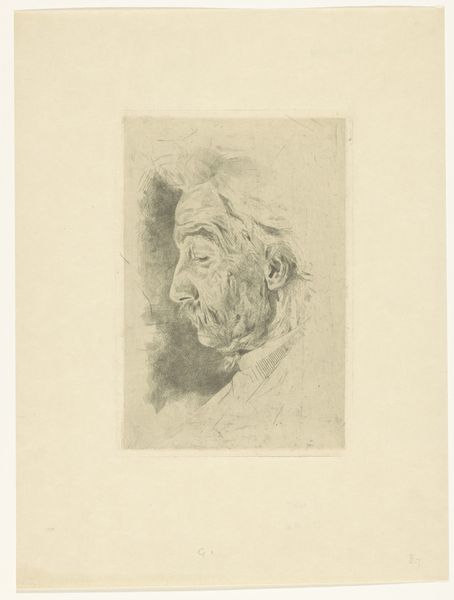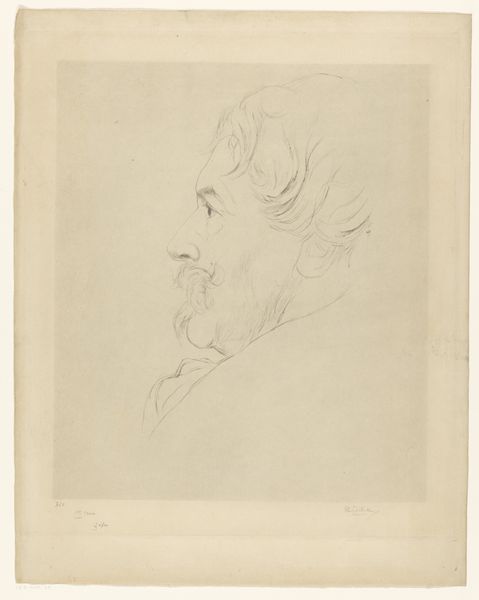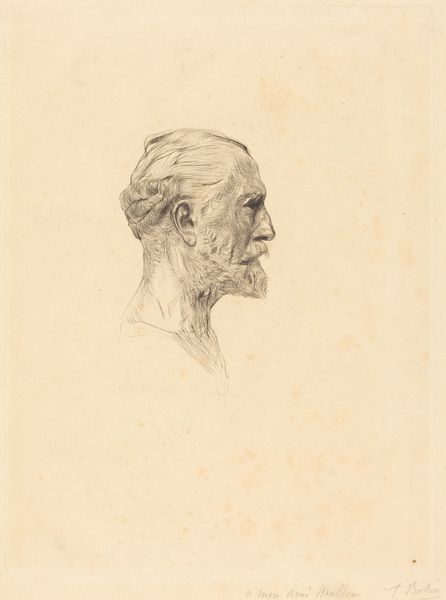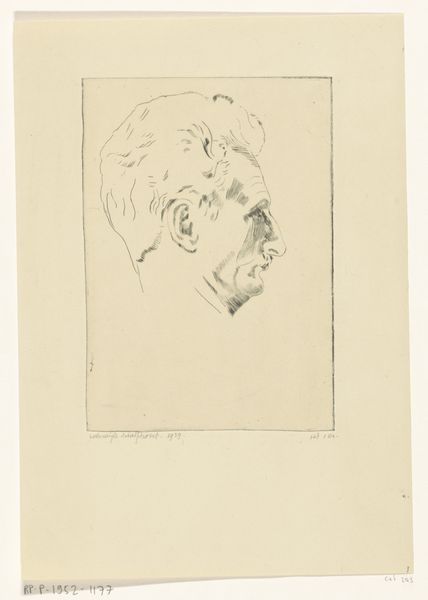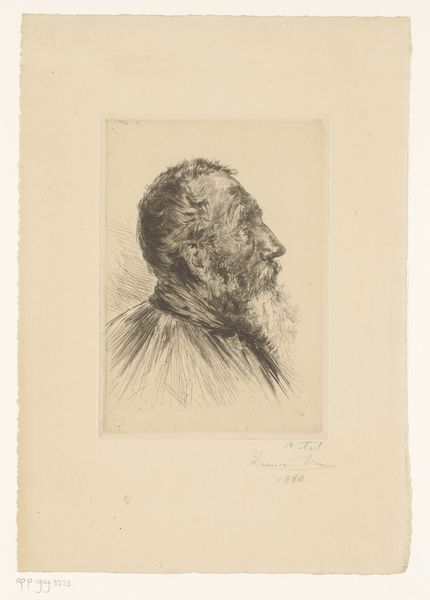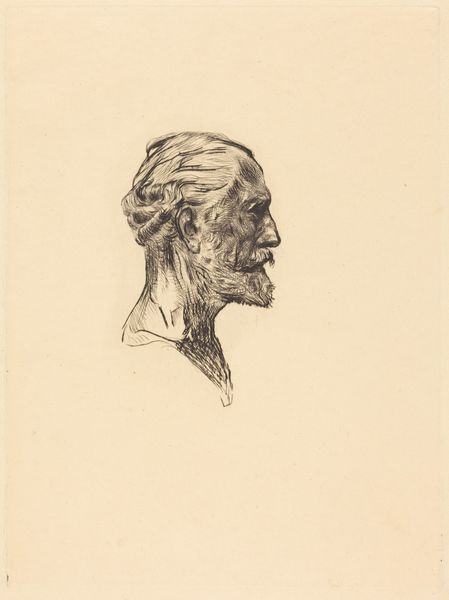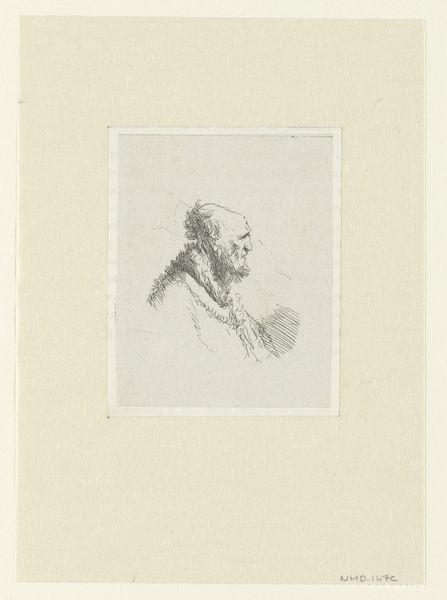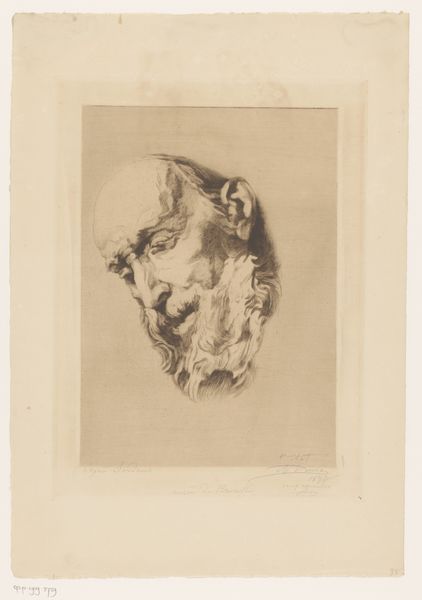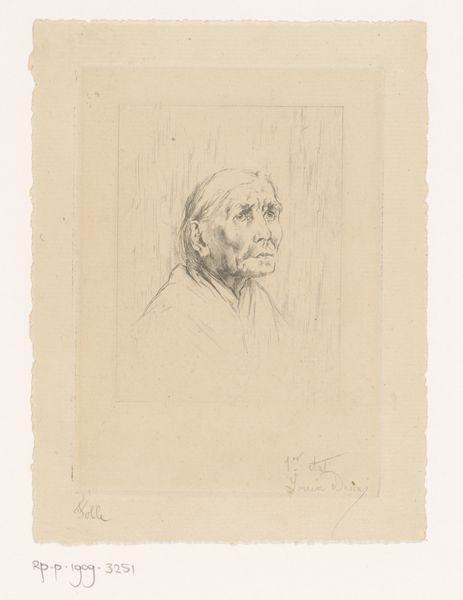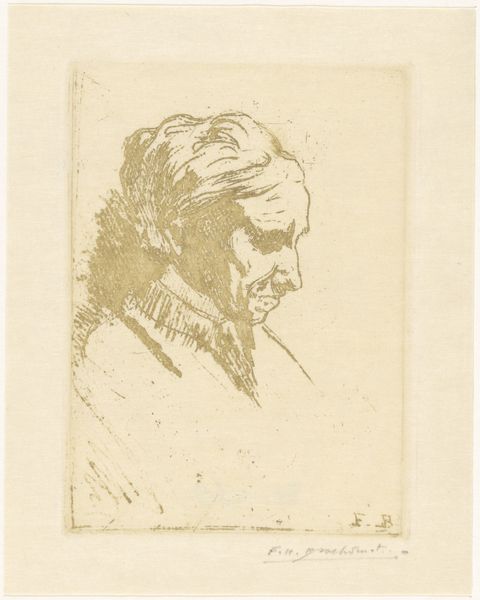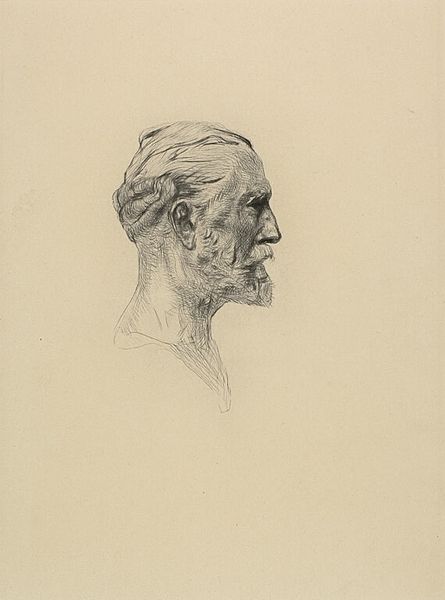
drawing, pencil
#
portrait
#
drawing
#
pencil drawing
#
pencil
#
academic-art
#
realism
Dimensions: height 247 mm, width 162 mm
Copyright: Rijks Museum: Open Domain
Editor: This is Philip Zilcken’s portrait of Edmond de Goncourt, a pencil drawing done sometime between 1890 and 1896, currently held at the Rijksmuseum. There's a quiet intensity in his profile, almost like he's deeply pondering something. What do you see in this piece, particularly from a symbolic perspective? Curator: The profile, especially in older men, carries a heavy symbolic weight. Think of Roman emperors on coins – the profile is about authority, permanence. Goncourt, the writer, is literally leaving his impression, his 'profile' on the cultural consciousness. Editor: That’s a great point. So the choice of profile wasn't accidental? Curator: Rarely is, in portraiture. Note his beard – carefully rendered. In late 19th century portraits, beards signal wisdom, experience, even a certain rebelliousness against clean-shaven convention. Consider the contrast with a clean-shaven, clean-cut bureaucrat of the time. Whose image is preserved? Whose ideals endured? Editor: And the medium – pencil. Does that carry any significance? Curator: Absolutely. Pencil lends itself to immediacy, to capturing a fleeting moment of thought. It feels more intimate than a formal oil painting, more like a glimpse into his intellectual world. Does the softness and relative impermanence of pencil work challenge ideas of “permanence” invoked by his profile? Editor: So the artist might be saying something about the changing nature of fame or importance? The medium itself carries part of the message. That gives me a lot to think about. Thanks for that deeper dive. Curator: Indeed. Symbols aren’t static; they evolve. By understanding their layers, we unlock dialogues across time.
Comments
No comments
Be the first to comment and join the conversation on the ultimate creative platform.
